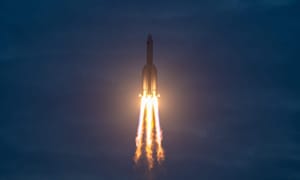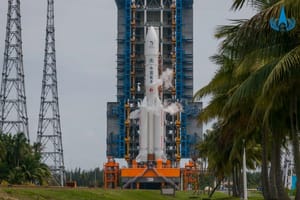
May 3, 2024
Chang'e 6 is Moon-bound after a perfect launch!
China kicked off its Chang'e 6 lunar far-side sample return mission at 17:27 pm China Standard Time, or 09:27 am Universal Coordinated Time, from LC-101 at the Wenchang Space Launch Site, in the southern province of Hainan. This mission is part of the country's fourth phase of its lunar exploration program.
Despite rain moving into the launch site, the Long March 5 vehicle carrying the Chang'e 6 lifted off at the start of its launch window. Ascent into low Earth orbit atop of the launch vehicle occurred as planned with the weather providing no effect on the launch, the Long March 5 is designed to launch in inclement weather conditions.
After a short coast phase in Earth orbit, the Long March 5's second-stage engines relit and performed the trans-lunar trajectory burn as planned. The Chang'e 6 spacecraft separated from the second-stage not long after the end of the burn. Chang'e 6 also unfolded solar panels on the orbiter and lander ahead of appearing from Earth's shadow.
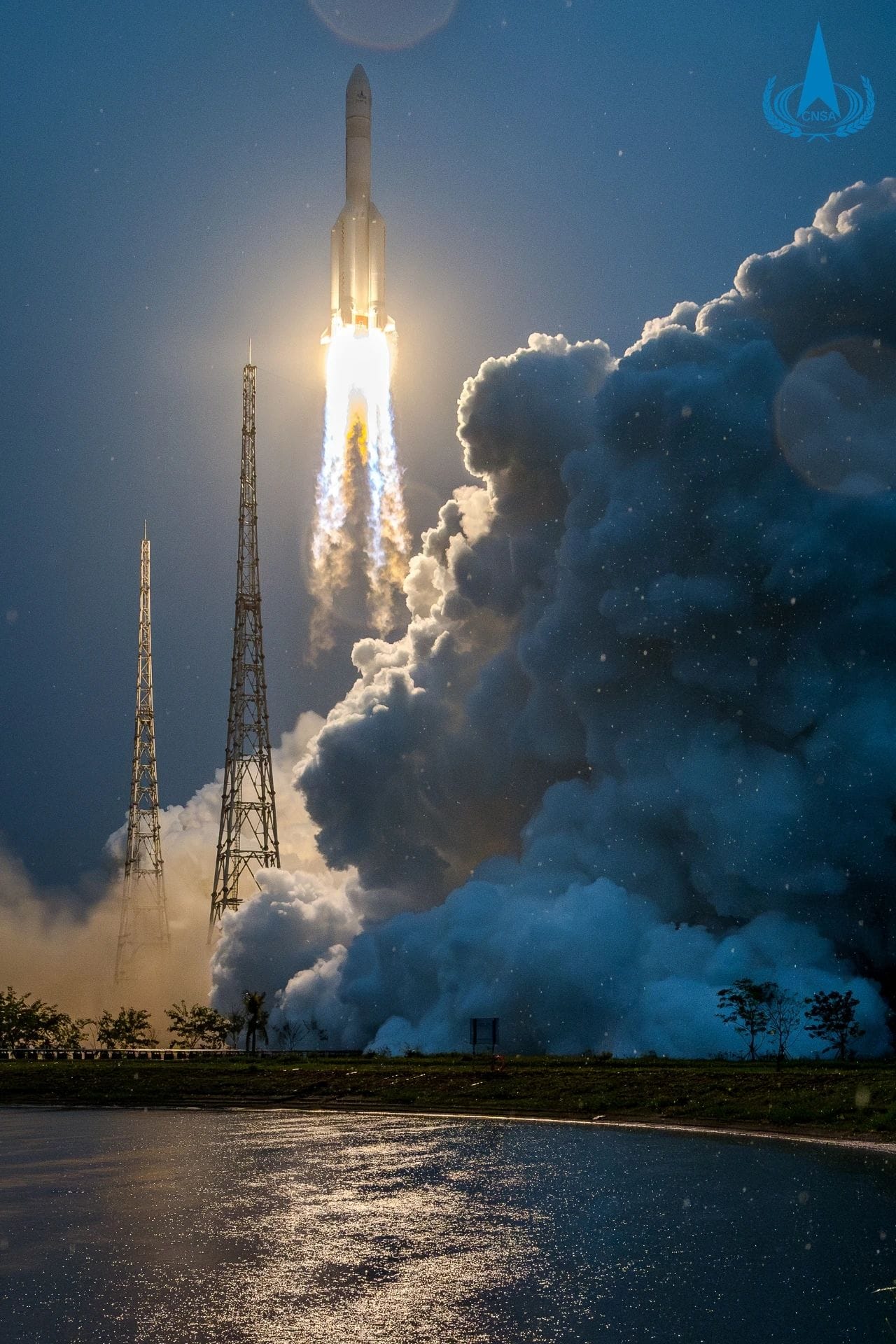
So far the launch mission has been declared a success by the China National Space Administration, but the mission is just beginning. The length of the mission is reportedly fifty-three days, with ten of those being heading to and returning from the Moon.
This mission is also hoping to achieve a world-first, collecting and returning surface samples from the far-side of the Moon, the Chang'e 6 spacecraft is reportedly going to return 2,000 grams of surface samples. The far side of the Moon largely unexplored, compared to the near-side, due to the requirement of relay satellites to communicate with spacecraft there. China has two relay satellites around the Moon, with the second launched back in March.
Wu Weiren, Cheif Designer of China's Lunar Exploration Program, commented on the significance of the mission to Xinhua saying:
"Collecting and returning samples from the far side of the moon is an unprecedented feat. Now we know very little about the moon's far side. If the Chang'e-6 mission can achieve its goal, it will provide scientists with the first direct evidence to understand the environment and material composition of the far side of the moon, which is of great significance"
Chang'e 6 is aiming to collect the samples after a landing in mid-May from the southern side of the Apollo Basin, at 43.0°S 154.0°W. The samples are expected to touch down safely on Earth no earlier than June 25th in China's Inner Mongolia region.
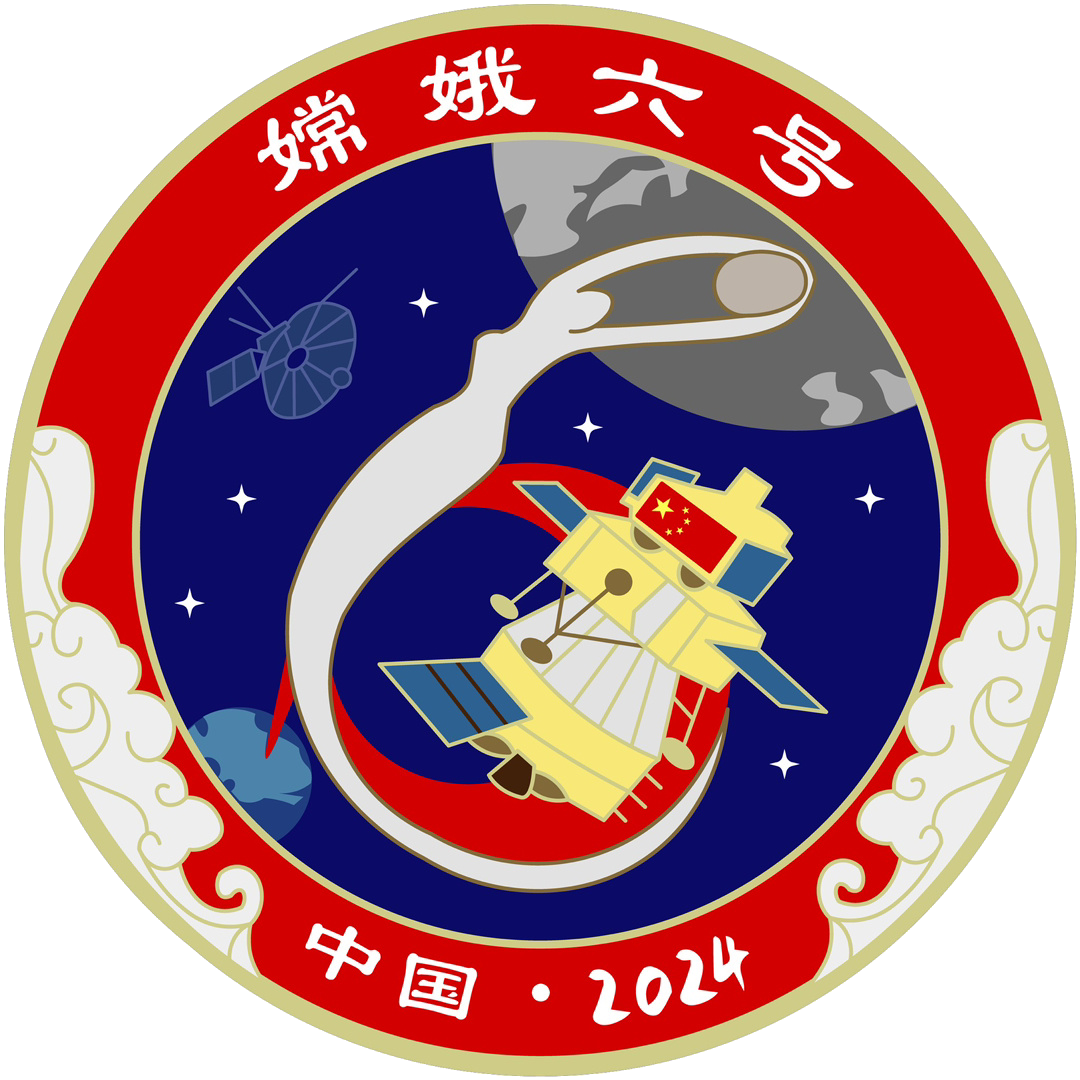
What makes up the Chang'e 6 spacecraft?
The Chang'e 6 spacecraft consists of four major components: an orbiter, a re-entry capsule, a lander, and an ascent vehicle. All four of these components have a combined mass at launch of 8,350 kilograms. The China Academy of Space Technology also reportedly manufactured Chang'e 6 as a backup for Chang'e 5.
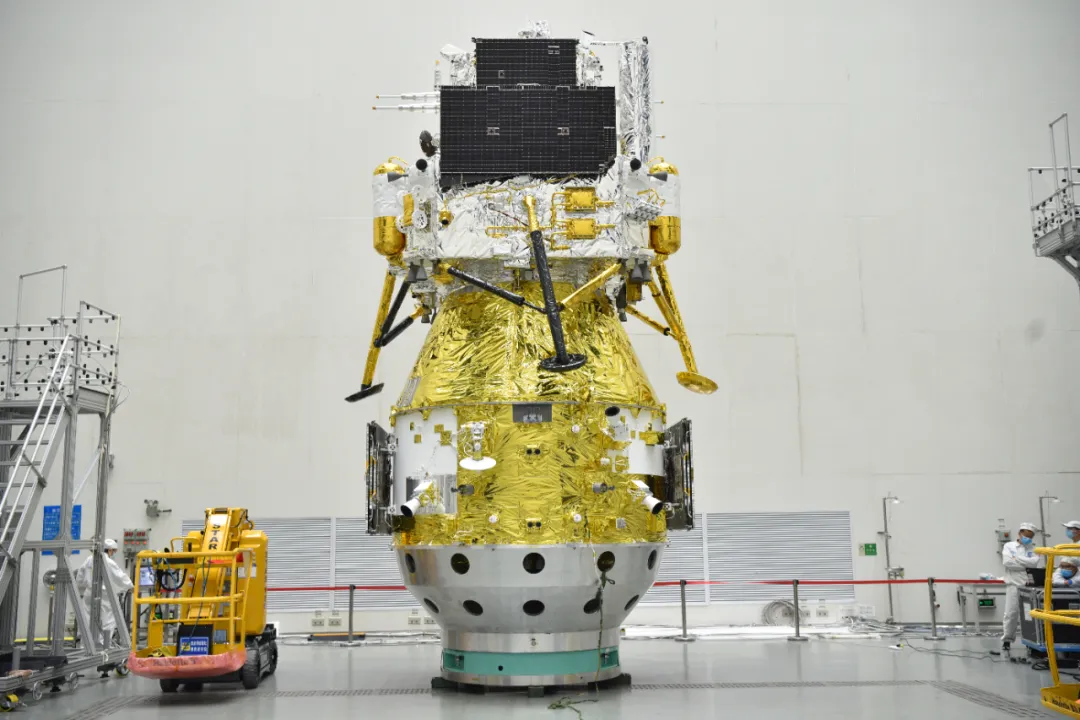
The orbiter allows the entire spacecraft to enter lunar orbit a few days into the mission. Before descent to the surface, the lander is attached atop of the orbiter with the re-entry capsule in a hollow space between the two. The orbiter will also perform the return to Earth with the re-entry capsule and be destroyed upon atmospheric entry.
The lander allows it and the ascent vehicle to travel down to the lunar surface to collect surface samples. It also houses a drill and scooping device that will collect the samples, these samples will be deposited into the ascent vehicle on top.
The ascent vehicle will carry the samples from the surface into lunar orbit where it will rendevous with the orbiter. After the rendevous, it will dock with and transfer the samples into the re-entry capsule.
The re-entry capsule allows the lunar surface samples to survive re-entry and touchdown back on Earth, but it will remain with the orbiter for most of the mission duration.
International Science Experiments on Chang'e 6?
Onboard the Chang'e 6 spacecraft are four international science experiments. They are from SUPARCO, CNES, and ESA.
SUPARCO is providing the ICUBE-Q CubeSat made by Pakistan. The small spacecraft weighs approximately seven kilograms and will be released in lunar orbit. ICUBE-Q will search for ice on the surface using its two optical cameras to image the lunar surface.
CNES is providing the French-made DORN instrument, which stands for Detection of Outgassing Radon. DORN will study the lunar regolith and lunar exosphere.
ESA is providing two instruments for the Chang'e 6 mission, one from Sweden and another from Italy. Sweden is providing the NILS instrument, which stands for Negative Ions on Lunar Surface. NILS will detect and measure negative ions reflected by the surface of the Moon. Italy is providing the INRRI instrument, which stands for INstrument for landing-Roving laser Retroreflector Investigations. INRRI will test out laser range-finding for lunar landers, this experiment is believed to be somewhat passive.
What does the Chang'e 6 mission look like?
The Chang'e 6 mission is expected to last approximately fifty-three days from launch. The mission plan is believed to be as follows:
The spacecraft will be launched from the Wenchang Space Launch Site atop of a Long March 5 rocket and be placed onto a trans-lunar trajectory leaving the spacecraft bound for the Moon.
After separation from the Long March 5, once headed toward the Moon, the service module will bring the spacecraft into its desired orbit of the Moon. Once in orbit of the Moon, the lander will separate from the service module, with the ascent unit on top, and land on the surface.
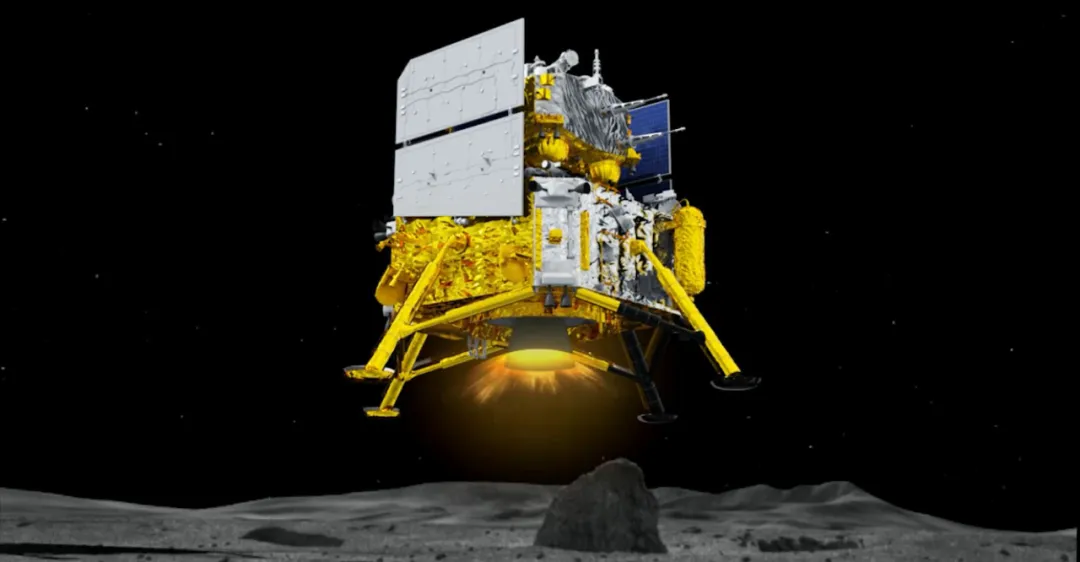
On the surface, the lander and ascent unit will perform various experiments and gather the required samples. After the samples are secured in the ascent unit, the ascent unit will liftoff and rendezvous with the service module, which will still house the return vehicle. The two spacecraft will then dock and transfer the samples into the return vehicle.
After the samples are transferred into the return vehicle and secured the ascent unit will separate leaving the service module and return vehicle. Once at a safe distance from the ascent unit, the service module will light its engine to send the spacecraft on a return trajectory to Earth. At a predetermined point prior to entry into Earth's atmosphere, the spacecraft will angle itself for entry and separate the return vehicle from the service module.
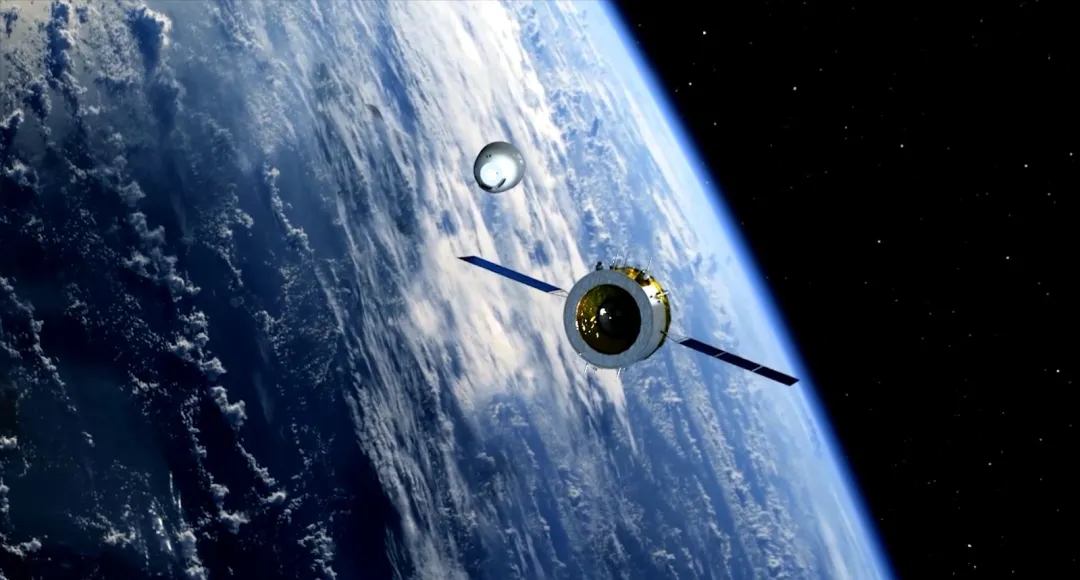
Once through the heat of entry into Earth's atmosphere at speeds of over 11,000 meters a second, or roughly 24,500 miles per hour, the return vehicle will deploy its parachute and touchdown on land inside the People's Republic of China.
What is the Long March 5?
The Long March 5 is a two-stage launch vehicle that burns liquid hydrogen and liquid oxygen in its first and second stages as well as burning rocket-grade kerosene and liquid oxygen in its boosters. It is the largest and most capable rocket in operation for the People's Republic of China and has supported its lunar and crewed space science programs, along with various other missions.
The Long March 5 rocket can place up to 25,000 kilograms into low Earth orbit, 14,000 kilograms into geosynchronous transfer orbit, up to 9,400 kilograms on a trans-lunar injection, 5,100 kilograms directly into geostationary orbit, and up to 15,000 kilograms into sun-synchronous orbit.
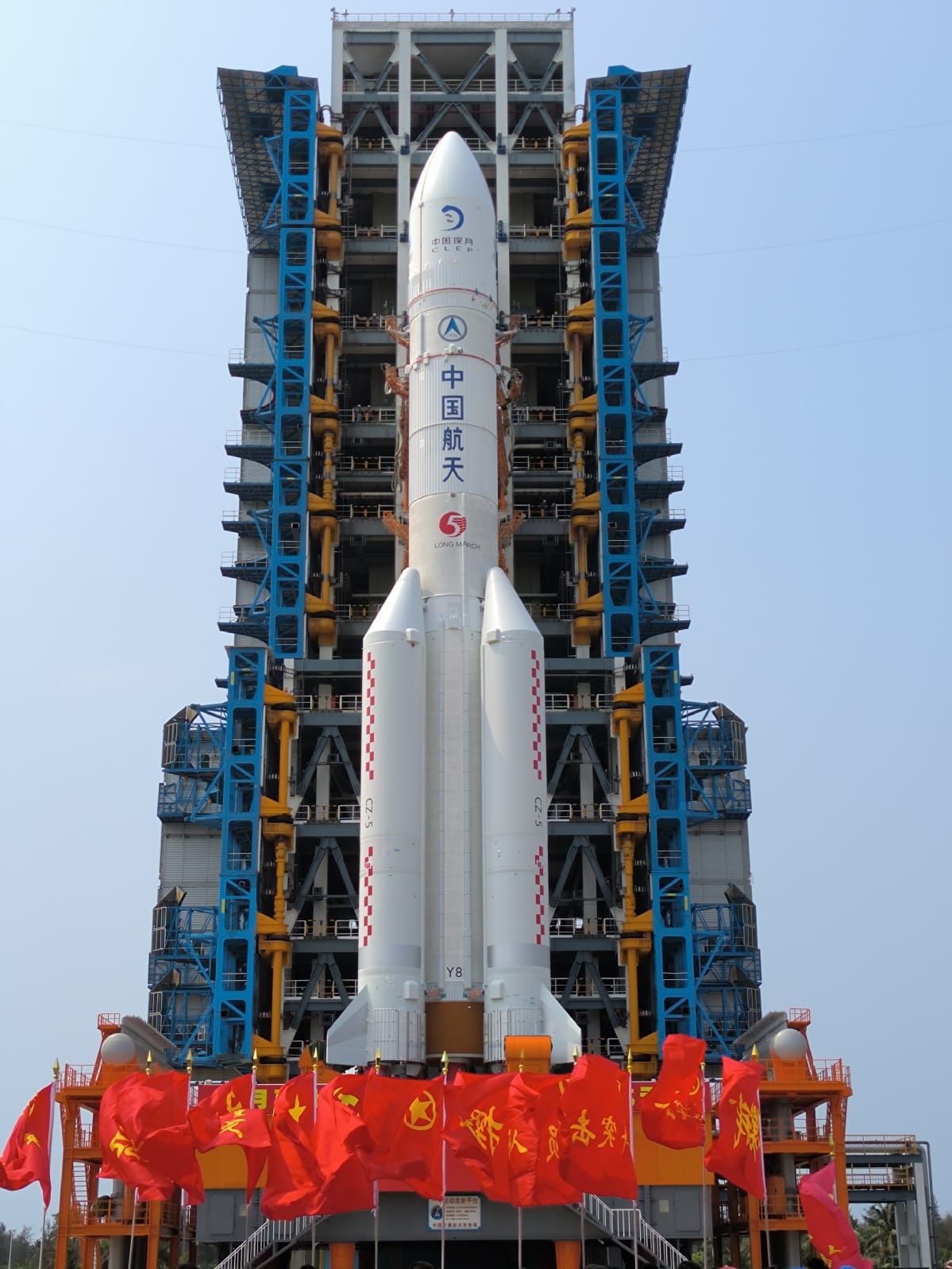
The first-stage is powered by two YF-77 engines generating 143 tons of thrust burning liquid hydrogen and liquid oxygen for eight minutes and twelve seconds. To allow the rocket to lift off, the first-stage has four boosters attached to the sides powered by two YF-100 engines each generating 245 tons of thrust each burning rocket-grade kerosene and liquid oxygen for two minutes and fifty-three seconds. These four boosters have a combined thrust of 979 tons of thrust. The combined thrust of the first-stage and boosters is 1,122 tons of thrust.
The second-stage is powered by two YF-75D engines generating 18 tons of thrust burning liquid hydrogen and liquid oxygen for eleven minutes and forty seconds.
The Long March 5 is manufactured by the China Academy of Launch Vehicle Technology and weighs up to 854,500 kilograms fully fuelled. When on the pad the rocket can be over 60 meters tall.

